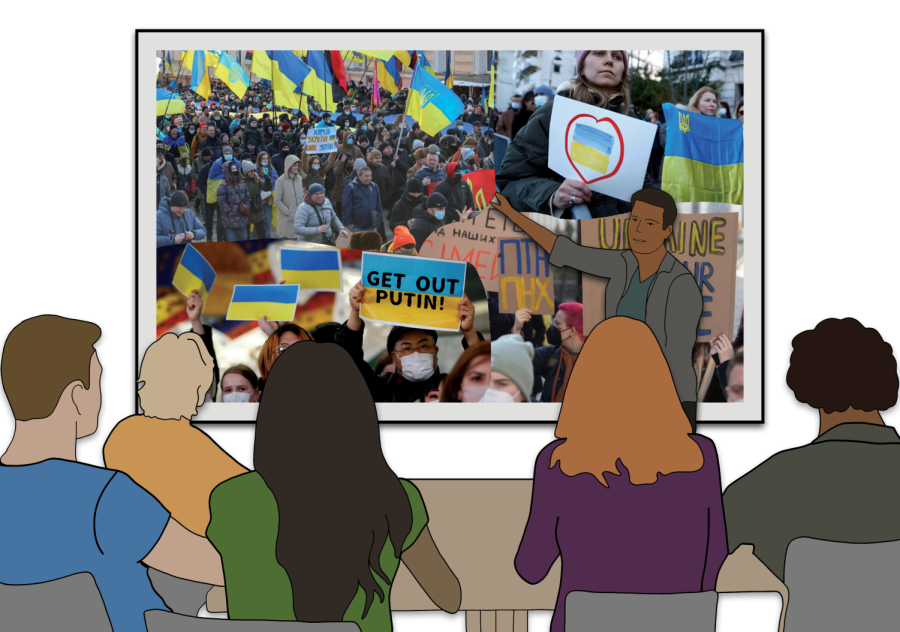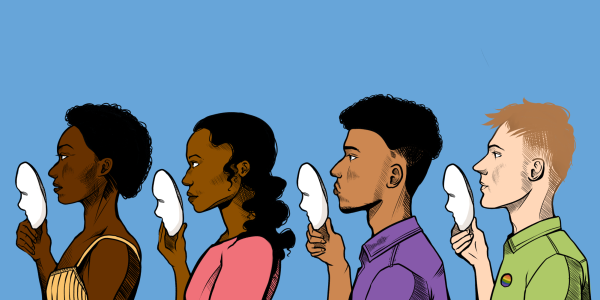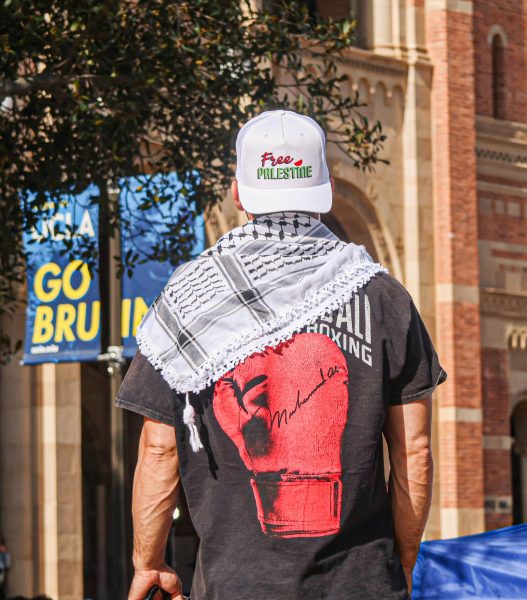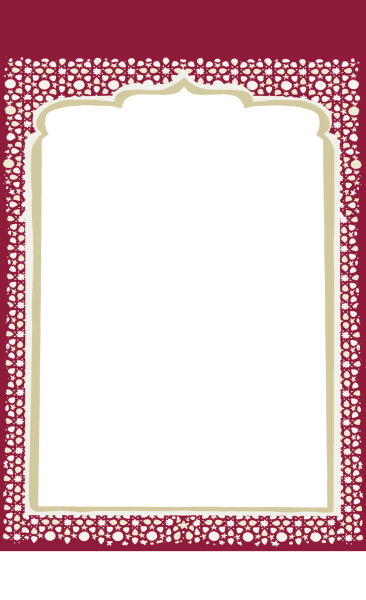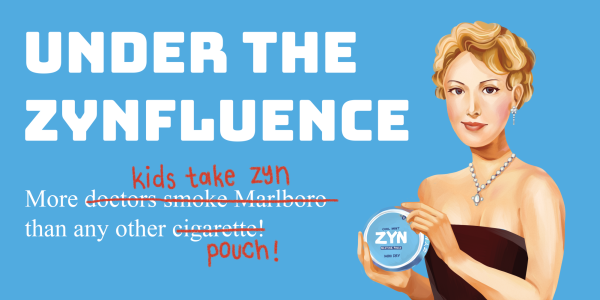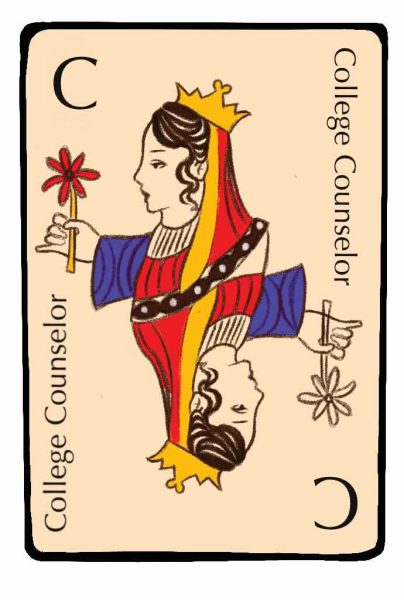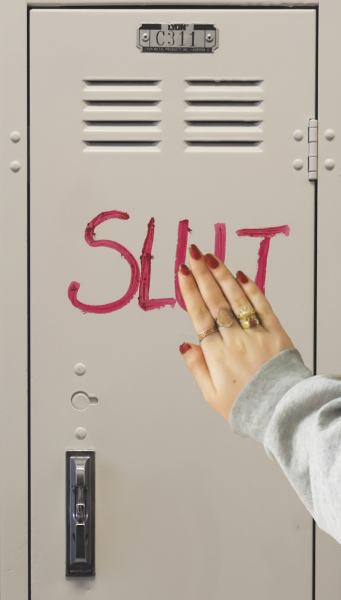Understanding Ukraine
March 28, 2022
On a Friday afternoon, an Advanced Placement (AP) U.S. Government and Politics class sat in its Seaver classroom, deeply immersed in a discussion about the events that had transpired the day before: Russian President Vladimir Putin ordered Russian forces to invade Ukraine. The chatter of students quickly faded with the sound of chair wheels sliding back across the carpeted floor. A student stood up from their desk and exited the room, leaving nearly twenty pairs of eyes staring in surprise.
The student in question declined to comment. Their classmate Raymond* reflected on the moment the student made the decision to leave the room.
“We were discussing the Russian invasion [of Ukraine],” Raymond said. “One student, whose family is Russian, essentially brought up how the demonization of Russian people has been part of American culture since the fall of the Soviet Union. [The student] was talking about how Western media incorrectly portrays the Russian invasion and how [the student thought] there are legitimate reasons for it.”
As the debate escalated, Raymond said his classmates remained calm but highlighted multiple flaws in the student’s argument. He said they did not criticize the student directly but that they instead chose to use facts to prove their points.
“Students were generally respectful and no one went after [the student], but a lot of people got offended and overwhelmed [the student] with facts, pointing out how [the facts were not solely present in] Western media,” Raymond said. “Scholars across the world have brought attention to the objectively bad things Russia has done […] It got to a point where [the student] got uncomfortable and left [the] room.”
Raymond said he feels his history teachers have effectively allowed students to talk about the invasion in the context of other material covered in each course.
“It’s not good that these world events happen, but out of it we do get detailed, cumulative discussions where we can synthesize the things we’ve learned,” Raymond said. “In [AP Government and Politics], which is a class where there’s a lot of talk about current events, we heard a lot of different perspectives. I think I came away from it with a better understanding of world affairs. It’s not common to be in a classroom environment where you feel comfortable putting forth an idea that’s not necessarily shared by other students or the teacher, and that’s something I really value.”
For Raymond, this particular incident was part of a wave of class discussions following the Feb. 24 invasion––the largest military mobilization in Europe since 1945. The New York Times cited both Ukrainian proximity to North Atlantic Treaty Organization (NATO) nations and the belief that Ukraine is fundamentally part of Russia as motivations for the invasion, which has killed thousands of Ukrainian and Russian soldiers and forced over three million Ukrainian civilians to flee as of March 19.
Teachers discuss patterns in European history and how they have taught the conflict in class
History Teacher Lilas Lane said the invasion is concerningly similar to previous events in European history and that she fears its lasting political and humanitarian effects.
“This action by the Russian president to invade Ukraine is certainly not without precedent, historically,” Lane said. “History tells us that rarely do these actions end without incredible violence, destruction and suffering on the part of regular people. Putin is not protecting Russians or Russian security […] but instead seems to be threatened by the possibility of a functioning democracy on Russia’s border. When this type of aggression goes unchecked, it encourages and condones other countries to do the same.”
In light of the invasion, Lane said she has facilitated discussions on the history of Russo-Ukrainian relations in the classes she teaches.
“When the invasion happened, we spent about 25 minutes discussing the background of the conflict in my sophomore history classes,” Lane said. “We talked about the long history of […] the Russian and Soviet Empires and the Cold War backstory.”
Lane said she gathers online tools for her students, encouraging them to further their own research and to add diversity to their regular news sources.
“Many of my students knew a lot about the context, but many did not,” Lane said. “I urge students to read from a variety of sources and not rely on social media exclusively for their news. I often post news stories on current topics on my homework page to encourage students to get out of their filter bubbles.”
Students of Russian and Ukrainian descent share personal responses to the crisis
Ryan Pinsker ’23, who is of both Ukrainian and Russian descent, said the crisis strikes a more personal chord for students with connections to those affected.
“It’s honestly horrible to see what’s happening in Ukraine right now, and naturally, my heart goes out to everyone who is currently there,” Pinsker said. “I just think it never should have happened. My family is trying to get a lot of our friends out, and we’ve been relatively successful. We’ve gotten a lot of people to Poland and safer parts of Ukraine as well, so hopefully, it’s all going to die down soon.”
Pinsker said as he grapples with the emotional impact of the ongoing occupation, he is concerned with the spread of misinformation throughout the media and the credibility of certain sources.
“A big problem is that there’s a lot of fake news that’s going around, which is kind of natural with something that’s happening on such a large scale in today’s world,” Pinsker said. “That honestly can’t be helped. But if there’s someone you trust who’s talking about it, listen to them and stay informed. A lot of it is just research. You can’t just rely on people saying random things.”
Sam Volokh ’23, whose family is Ukrainian, said the crisis has made him more aware of his privilege in his daily life. He said he empathizes strongly with all Ukrainian civilians.
“I think it’s really unfortunate that this is what the world has come to,” Volokh said. “It’s a true tragedy. As a Ukrainian myself, it hurts to see my brothers out there suffering so much pain. It really puts things into perspective and shows us the multitude of things that people have to go through. I just hope all my family stays safe.”
Faculty discusses how the crisis has impacted their teaching.
Though he said he agrees that the invasion will have detrimental effects on both Ukraine and Russia, History Teacher Peter Sheehy said he feels uplifted by the response of other foreign powers, including the United States.
“Russia’s invasion has underscored the continued relevance and importance of NATO,” Sheehy said. “The invasion has united Western Europe. I am not sure Putin expected to see this strong unity, including the swift implementation of severe economic sanctions. I am pleased to see the United States, Europe and NATO respond with [these sanctions], but I fear that Putin is committed to a long and destructive war and occupation of Ukraine.”
Sheehy said he has taken a similar approach by holding class discussions so students can share their own knowledge and learn from each other.
“I am not an expert in this issue, so I am cautious about leading discussions on the invasion,” Sheehy said. “I have tried to make time for students to discuss the news, and I have tried to provide a basic framework for understanding issues such as sanctions, diplomacy, NATO, the Cold War and the fall of the Soviet Union.”
As a means of creating a safe, informative space where students can ask questions and share their feelings and opinions, President Rick Commons said the school encourages teachers to discuss current events in the classroom.
“I know there have been conversations with students and community members about their feelings and their perceptions from a historical, political and humanitarian perspective,” Commons said. “We have asked teachers to think about the relevance of world events in their classes every day. That’s easier to do sometimes in humanities classes than math and science, but all teachers are encouraged to think about what’s happening in the world and bring it into the classroom.”































